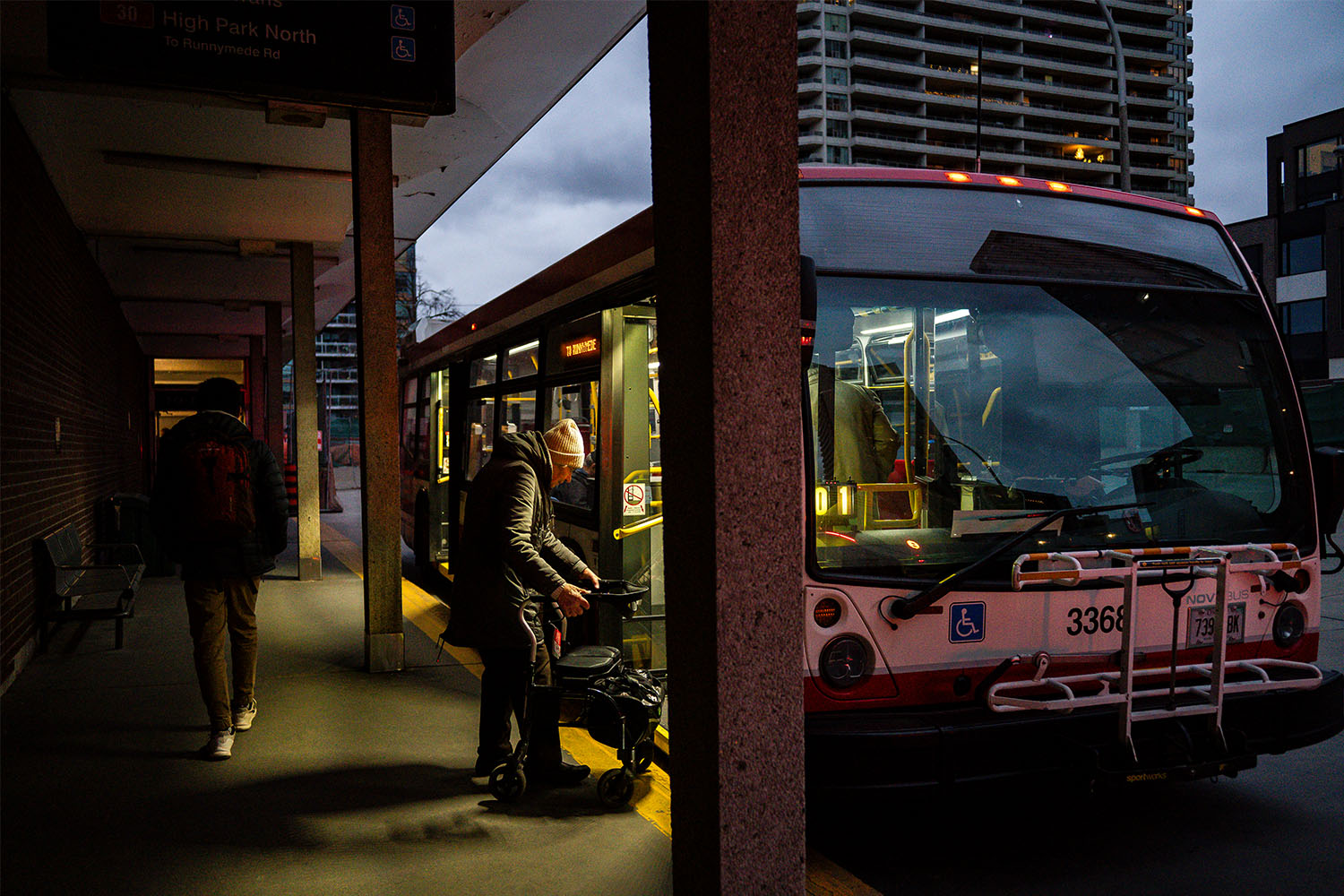zang
Senior Member
I'm ashamed to say the scales only started to fall from my eyes on accessibility a decade ago when my daughter was in a stroller. I remember always being annoyed with waiting for kneeling buses. Or never put thought to how few places had any accessibility aids whatsoever.I usually do take the stairs actually. And now that the Eaton Centre has added more, it makes it that much easier to choose that option. Your bolded text includes a good point I hadn't considered before. If you are this passionate about it, I hope you are complaining or petitioning the powers-that-be to add signs to escalators informing people they should not walk.
And then I needed them for the stroller, and I saw how little thought and maintenance was put into accessibility in this country. I was lucky in that regard, as many don't become aware how little attention is paid to mobility until they themselves lose theirs.
I once argued with Longo's corporate over the use of a pneumatic "elevator" in their 100 Bloor East store. Because of liability and the requirement that operators be trained means owners of said elevators don't allow them to be operated by anyone but staff. Using that particular elevator means literally picking up a telephone at the bottom, which rings the cashiers at the top of the stairs, and you proceed to wait hoping they bother to pick it up, aren't too busy, or are even there to do so. Then they have to come down the stairs, unlock the elevator, make sure you're in it, meet you at the top, open the door, etc. Getting into the store with a stroller could mean waiting 5 minutes or longer, for what is about 8 steps.
Their solution? "Maybe you can get training and get put on a list of official operators." To which I said, "F- no. Because you're just appeasing me and doing nothing for others who may need it."
Accessibility should always focus on independence, otherwise it comes across as pity. A small adjustment in store layout could've easily accommodated a multi-stage ramp, but if it's a question of extra display space vs. accommodating those with disability, capitalism will always choose the former.
There are at least three people in my building that are in wheelchairs, and yet for a very long time (even pre-pandemic), the building took little care to make sure the three automated doors got fixed promptly. I watched as other fully phone-focused tenants did things like kick the door opening buttons so they didn't have to use their hands or shoulders to open a door. I saw how poorly the TTC has implemented their subway accessibility plans (a fair chunk are still lacking elevators, long after it was to be completed in 2020). We still have Wheeltrans, FFS. It exists almost solely because of lacking accessibility infrastructure.
Soon enough though, my father-in-law developed an "invisible" disability and my wife's and her mother's Ménière's both popped up a few years apart. I openly asked friends if they had any "invisible" disabilities (do so yourself and you'll find more than you think), and the reality of the world for those with disabilities has become fully aware to me.
When I was still doing graphic design, I made sure all my clients understood that I will not do work that doesn't (when it can) accommodate. All of my website work has been screen-reader friendly. I have done some work with NBRS, and some minor advocacy volunteering. I should really do more volunteering, but finding the time these days is difficult.
But I encourage you and everyone else to take just one average day and question at each stop how easy or hard this would be for someone requiring a wheelchair, or with mobility problems, etc.
We have an aging population in Canada. Without laws requiring accessibility accommodations, a whole lot of people (see: Boomers) are going to need them soon enough. Thankfully, some laws have come into play (especially in the workplace), but so much more work needs to be done. Advocating is fine, but the government has the final say and the ability to enforce it.
I myself have no disabilities (minor loss of grip/movement in my left thumb aside), but I know there will be a day in the future that I probably will. And it makes me aware that people with disabilities today deserve as much respect and dignity that I hope I'm offered when my turn comes up. It certainly will for most people.
Regarding passing on escalators though, that sense of entitlement is so engrained in people that it's going to be near impossible to stop everyone. They look like stairs, so people will treat them like stairs. Nobody reads signs (or actually cares enough to obey them), and I seriously doubt that any company or agency is going to fork out money to enforce standing only on them. I have taught my daughter though that she doesn't have to stand right or let anyone by her, and that she has no right to ask anyone else to do so for her, and at least that's a start. I'm not going to convince the whole world though, but my hopes are that after all I've pointed out here, that at least a few have reconsidered the idea.
Last edited:

